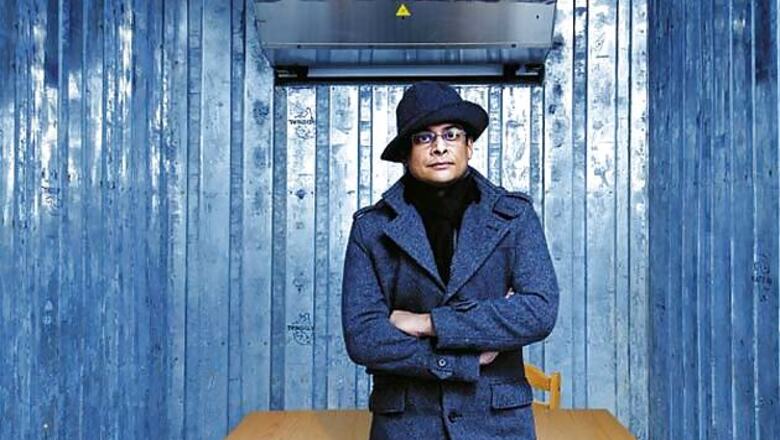
views
You know, there is no easy way to say this,” says Gaurav Jain, the 39-year-old managing director of Swastik Roadlines and explains. His father had started Swastik in partnership with two friends.
Jain joined the company in 1999 when it was doing very well. It had 23 trucks. None of the founders realised what was around the corner.
Ever since its inception in 1997, the company had grown on the back of a single customer—JK Tyre. Almost 95 percent of Swastik’s revenues came from it. In 1999, JK Tyre’s management sacked the local vice president at the company’s plant in Bammore (Gwalior) because an internal audit showed several wrongdoings.
The man who JK Tyre sacked was Swastik’s single contact point at the company. When he went so did JK’s business. "They wanted that all the relationships that this man had made should be thrown out. So humko bhi bahar kar diya (they threw us out too). Next morning we had no work," says Jain.
He was 26 then. Over the last 13 years, he has done a rescue act on the company. Better known by its brand, ColdEx, Swastik closed 2010 with revenue of Rs. 110 crore. With a fleet size of 650 reefer trucks, almost four times its nearest competitor, ColdEx has built a network across 55 cities in India.
"Ever since we started doing cold chain in 2005, we have been growing at a rate of 50 percent every year," says Jain.
In December 2010, India Equity Partners, a private equity venture fund, picked up a minority stake in Swastik investing $10 million. Not very big numbers. But then numbers alone don’t tell the whole story of Swastik.
ColdEx has succeeded in a space where many large companies have failed. There is Gati-Kausar or Transport Corporation of India’s cold chain venture which fizzled out. Except for Gateway Distripark’s Snowman Logistics, there is hardly any company in India which has built a scalable business model.
People have invested heavily in technology or fleet only to find that there are no takers. Swastik, however, has grown steadily year after year and of all places, out of Gwalior.
While Gaurav Jain was born and brought up in Gwalior, his father Om Prakash Jain migrated in the early '60s from Agra to Gwalior. The senior Jain is 65 now and well known in the city. He started out as a clerk in the Accountants General’s office in Gwalior. Later, he decided to get into the coal trading business which earned him both riches and fame.
By the time Gaurav came back from Pune after completing his engineering, Om Prakash was wondering if he should set up a factory for his only son.
Young Gaurav Jain, however, decided that he must make some use of his engineering degree. For about 10 months he worked at a company called MTR Steel in the automation division. That’s when the opportunity of a marketing job at Swastik came up.
Primarily a trucking and trading business, Swastik was doing well and Jain wanted to keep a check on the cash the company was generating. Plus there was an opportunity to travel and meet a lot of people.
"So I said that chalo hum marketing karte hain, toh Bangalore gaya, yaha waha ghuma bade shaan se aur logon se milne mein bada mazaa aa raha tha (let me do something in marketing and I travelled to Bangalore, met a lot of people and it was fun and I was really enjoying myself)," he says.
But his days of doing fashionable marketing stuff were soon cut short. After Swastik’s near-death experience in 1999, Jain spent the next few years building a dry cargo trucking operation. It was an uncomplicated business.
You walked into a factory, met the operations guy and looked for cargo. It could be anything from finished goods to raw materials. At the time, the industry was fairly unorganised and procurement was not a centralised function with companies as it is today.
To get business you had to move from one factory to another and not deal with a corporate head office. Local relationships mattered and a few hours delay in goods reaching its final destination was the norm. This suited Jain fine.
By 2004-05, Swastik was moving dry cargo for quite a few companies, among them a large concentration of food companies. Cold chain logistics, however, was not even on the horizon. How the company got into it is a story of serendipity. And what’s more interesting here is Swastik’s secret success formula.
The power of simplicity
In 2002, Cadbury India found itself in the middle of a crisis where worms were found in a few of its confectionery products. Around this time, raw material for confectionery items like Dairy Milk or Perk or Gems were transported in open containers which had no temperature control.
In industry parlance, this is known as ambient temperature. After the crisis, Cadbury launched a massive initiative to change that. By 2003-04, Cadbury was ready with a plan to invest in a dedicated cold chain.
Kausar, a cold chain company based out of New Delhi, was appointed at Cadbury’s factory in Malanpur near Gwalior. The company manufactures products like Five Star, Gems and Perk at this facility.
At that time, Swastik was doing the dry cargo movement for Cadbury and Jain remembers seeing from the sidelines what was happening. "We were a part of that factory and we saw little trucks coming in, picking up confectionery and not even 40 percent utilisation was happening because it was such a light cargo," he says.
Kausar was running heavy duty reefer trucks which were meant to carry meat. Not confectionery. "So it was very easy to understand that that won’t work," says Jain. And just like that, he mentioned it to the operations head that if Cadbury was serious about this plan, then Swastik would bet everything it had to make it work.




















Comments
0 comment